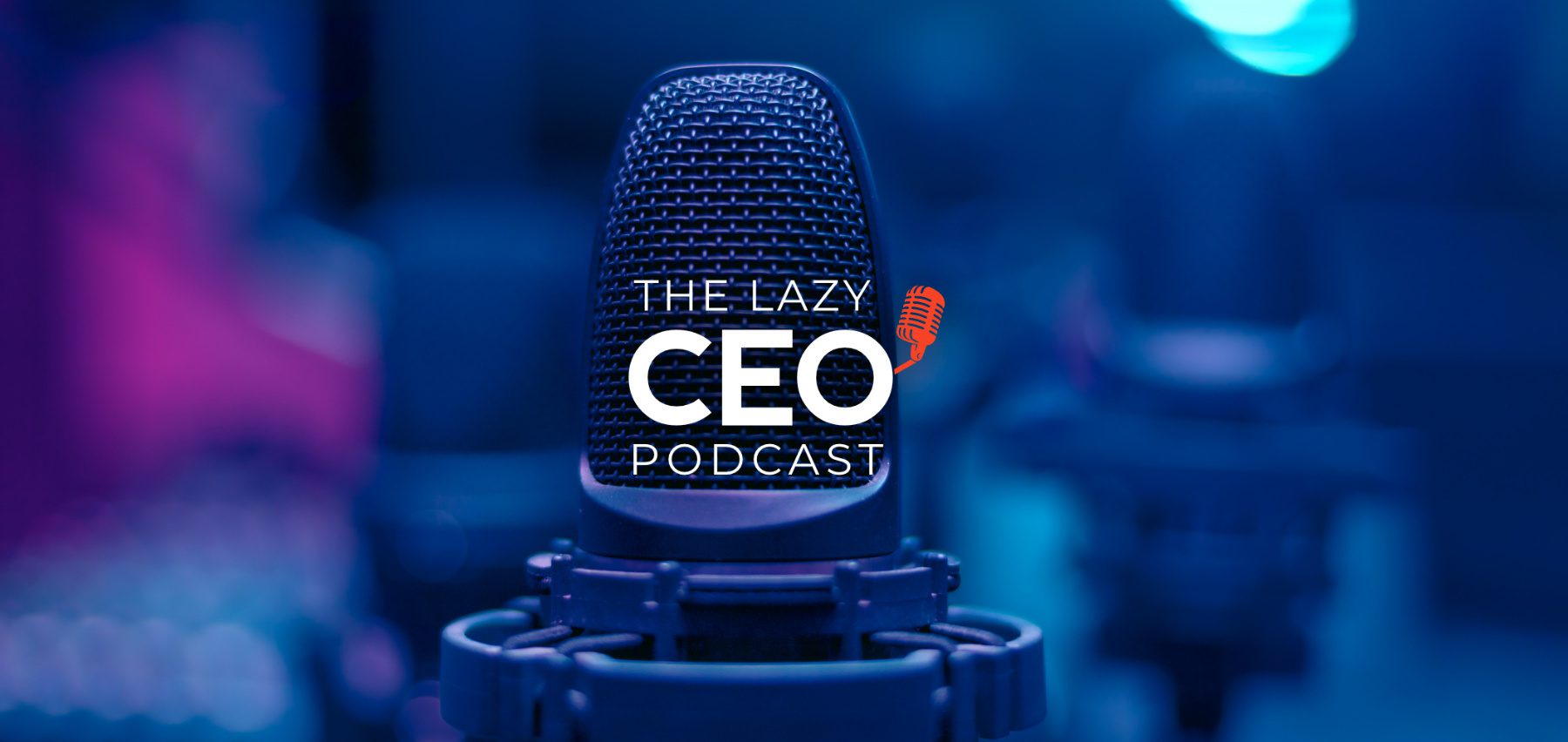In this episode of Business Growth and Customer Experience:
- Jay Baer, the best-selling author, and speaker shares his knowledge of creating business growth through marketing and customer experience.
- What marketing metrics should a CEO care about?
- The customer journey.
- Word of mouth strategy – Talk Triggers.
Here is a glimpse of this episode:
Jim Schleckser, CEO of The CEO Project and host of The Lazy CEO Podcast, sits down with a fun guest, a hall-of-fame speaker who has had multiple bestselling books, Jay Bear.
Jim Schleckser:
What are the five things that we need to be smart about in engaging with marketing to ask the right questions as CEOs?
Jay Baer:
I think partially because it’s obviously the fastest growing and all around us now, and so transformative, we tend to think that digital is good just because it’s digital. As a CEO, I would question that assumption. So often the coin of the realm in digital is reach and awareness, and how many people saw your thing, or, and, and I guess my retort to that is to what end, right? Those are vanity metrics.
We can’t sell exposure, not at scale. And, so typically, what we try to advise CEOs to do is to say, okay, what desired action are we trying to create here? Is it net new customers? Is it an increase in customer purchase frequency? Is it average customer value on an annualized basis? Is it customer retention? Start with what we’re trying to incentivize from a behavior standpoint and then, and then build upwards from there. Create a series of digital and many non-digital scenarios that allow that to happen. But the reality is that most digital strategists don’t do that. They start with the caboose, not the engine. Then they try to gerrymander their way to the appropriate solution. And that’s why so much digital strategy is inherently flawed.
I’ve seen too many PowerPoint presentations from the marketing team about clicks and eyeballs, but how many dollars did this generate? And this is a great irony, from a CEO standpoint. Digital is so much more measurable incrementally than outdoor or print or television or radio. It’s by far the easiest to understand the trajectory of success or lack thereof that you’re experiencing. Yet, the crazy part is so many people don’t take advantage of that.
And obviously, it makes testing a lot easier as well, which as somebody who came up in the direct mail business, that’s the holy grail.
Jim Schleckser:
What are the three metrics that you care about and why?
Jay Baer:
Depends on the project, depends on what kind of consumer behavior you’re trying to incentivize. Ultimately it should helicopter back to whatever business success metric you’re looking at. Could be sales, could be churn rate, could be new employee applications if you’re trying to fix a staffing problem with digital.
So when I ask that question of my marketers or my digital marketers, the good one will say, what’s your business problem? And how are you going to measure, how are you going to know we’re successful against that business problem? And then that’s my metric right there. They are not going to tell you, you’re going to tell them.
Jim Schleckser:
I saw you do a piece a while ago on and maybe you could talk about this on the customer journey and provide information at the point of need.
Jay Baer:
The reality is that we all come from an era where personal time and one-to-one or small group communication in person you know, over, over a video call et cetera, has been held up for many, many years, especially in B2B as the goal. So, if we can provide enough information to get them interested, we’ll make sure a BDR or somebody qualifies this lead, and then we’ll give them to a salesperson and then we’ll have a sales conversation and eventually, they’ll become customers that, that’s sort of the historical process and it still works. But now what we find, especially amongst younger buyers millennials, and Gen Z, about half of them actually prefer a completely seller-free experience. They’re like, just give me the stuff and I’ll figure out what to buy and whether to buy it and which options to select.
The exercise that I talk about a lot on stage is this. Grab a piece of paper and a pen, and I want you to write down the 25 questions that your customers have most often about your business, your products or services pre-purchase. Every CEO can do it. That’s what they think about. Now, take a look at that list. How many of those questions can be answered by a prospect on your website within two clicks? And it’s usually about four.
We’re making people work too hard to get the information they need. What if your customers could never talk to anybody at your company? What if you didn’t have an email address? What if you didn’t have a phone? What if you didn’t have a chatbot? Could you still sell stuff? And if the answer is no, you should probably rethink that.
Jim Schleckser:
Let’s talk about Word of Mouth as a strategy.
Jay Baer:
Word of mouth has been a customer acquisition strategy since the first caveman sold an arrowhead to another caveman. But only 1% of businesses have a defined and documented word-of-mouth strategy. We just take it for granted. Throughout modern business history, we’ve sold ourselves a lie. And the lie is that competency will create conversations and that if you just run a good business, people will naturally tell other people about you. That seems to make sense on paper, but it doesn’t hold water in terms of actual human behavior. For you to introduce the topic of a business, a product, or a service to your friends and colleagues, something unexpected must happen. We don’t talk about good; we talk about different, and this is why you almost never see three-star reviews.
All your reviews are five-star or one-star. And so word of mouth works the same way. In my book, Talk Triggers, that’s what we call it, it’s an operational choice that you make in your business that is designed to create conversations. And it’s not your core product or service, it’s something else that you do differently, then people say, I didn’t think that was going to happen. And that becomes the story that they tell their friends and colleagues. You have to give people a story. And it literally is a strategic execution of a playbook to create word of mouth. Most people just say it’ll take care of itself and it will not.
For more of Jim and Jay’s conversation, examples of Talk Triggers, and how to create business growth through customer experience, listen to this episode of The Lazy CEO Podcast.
Resources mentioned in this episode:
- Jay Baer on LinkedIn
- TheBaerFacts.com
- Jim Schleckser on LinkedIn
- The CEO Project
- Great Ceos Are Lazy: How Exceptional Ceos Do More in Less Time by Jim Schleckser
Thank you to our Guest

Jay is a customer experience and digital marketing pioneer, expert, advisor, researcher, and analyst. He has spent nearly 30 years helping the world’s most iconic brands gain and keep more customers. A 7th-generation entrepreneur, Jay has written 6 best-selling books and founded 5, multi-million dollar companies.
Jay is an inductee into the halls of fame for professional speaking and word-of-mouth marketing, and the creator of multiple award-winning podcasts. He is also one of just two people in the world listed as one of the top 30 “global gurus” in two different knowledge categories (customer service, and internet marketing).
He founded the strategy and analysis firm Convince & Convert and is a board member of Experience Dynamic, a full-stack customer experience services collective.
Sponsor for this episode…
This episode is brought to you by The CEO Project. The CEO Project is a business advisory group that brings high-caliber, accomplished CEOs together. Our team of skilled advisors is comprised of current and former CEOs who have run both public and private sector companies across multiple industries. With our experience and expertise, we guide hundreds of high-performing CEOs through a disciplined approach that resolves constraints and improves critical decisions. The CEO Project has helped high-performing, large enterprise CEOs with annual revenues ranging from $20M to over $2 billion to drive growth and achieve optimal outcomes. If you are an experienced CEO looking to grow your company, visit www.theCEOProject.com.









